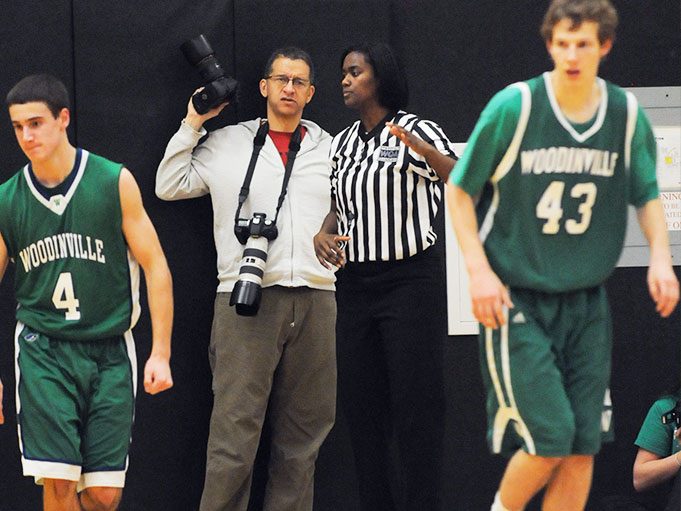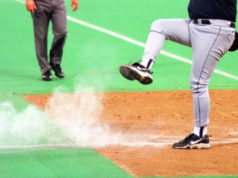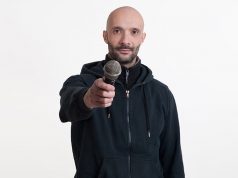Officials are in the middle of the action, focused on the game but also aware of the sideline surroundings. Similarly, photographers and community access cable television camera operators are out to do their jobs as well.
The problem is that a photographer or camera operator may wants to hone his or her craft in space that officials may need to occupy, often in a gym where people measure in inches the distance between the endline of the basketball court and the wall of the building.
Officials need that space to do their job, to get the best angles on the action unfolding in front of them. So does the camera operator. So do the players. They need a buffer zone, a place to land when they lose their balance after contact (or contact avoidance) inevitably occurs.
In one high school basketball game, a player suffered a back injury requiring surgery after he collided with a television camera operator. According to published reports, the player needed surgery to stabilize dislocated vertebrae after he ran into the camera operator at the end of the court after a driving layup.
The reports do not indicate if the particular camera operator was on the court, 10 feet off the court or somewhere in between. Nor do they tell us whether the camera operator was standing, kneeling or seated, or whether he was actively shooting video or just watching the game.
We do not know if anyone could be blamed for that particular injury. What we do know, though, is that an official’s first responsibility is for the safety of the participants. Officials should never sacrifice player safety for the convenience of the media.
Print photographers, news crews and other media members always will want to be close to the action, with the best angles. An official should not prevent the media from doing its job. Players at any level like to see their highlights on television or their pictures in the newspaper. But an official must enforce upon the media reasonable limits of distance and location, whether it’s on a court or field.
A judge or jury considering a civil lawsuit against officials for negligence arising from a player/ media collision will ask:
- Was the media member in a potentially dangerous location?
- Were the officials aware of the potential danger or should they have been aware of it?
- Did the officials take appropriate preventive measures?
Following the standards for distancing media from playing surfaces will not necessarily insulate officials from liability. Officials still should take precautions before and during contests to keep the media clear of danger areas. Talk to the photographers and video camera operators and tell them where they can and cannot stand. Most professional media members know their limits and will follow an official’s directives. If they refuse, stop the game and direct them to a safe area.
At the high school level and below, officials may have to deal with student journalists, parents and booster club members who want to capture pictures of the players. Let them do so — from a safe distance.
What's Your Call? Leave a Comment:
Note: This article is archival in nature. Rules, interpretations, mechanics, philosophies and other information may or may not be correct for the current year.
This article is the copyright of ©Referee Enterprises, Inc., and may not be republished in whole or in part online, in print or in any capacity without expressed written permission from Referee. The article is made available for educational use by individuals.


















